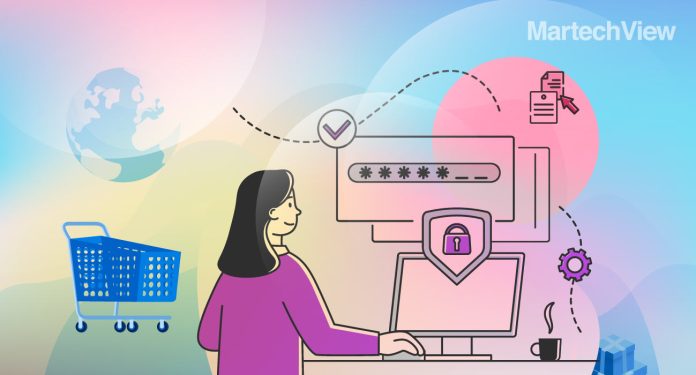Data privacy regulations and consumer concerns challenge traditional marketing methods. Learn how loyalty programs and first-party data can help brands connect with customers, personalize experiences, and build trust in the new data landscape.
The Irish Data Protection Commission recently ordered Facebook’s parent company, Meta, to pay two fines totaling €390 million for breaching the EU’s overarching privacy law. The ruling is significant as data-protection history is being written as we speak. How enterprises react toward data privacy from a compliance or trust-building approach will decide the future of the brand and impact relationships with consumers. It’s important to note consumers are watching closely.
January 28th is celebrated as Data Privacy Day (DPD) worldwide to sensitize individuals and disseminate privacy practices and principles. It encourages those who handle, store, and use data to remain committed to the culture of privacy.
Obtaining third-party data is a looming challenge as consumers become increasingly aware of their data privacy rights.
Privacy has never been a larger priority for the brand-consumer relationship. With regulations like the General Data Protection Regulation (GDPR) and the California Consumer Privacy Act (CCPA) in place, those handling consumer data must obtain users’ explicit permission to share and use the data generated through digital interactions.
It’s a trend here to stay, and brands that get ahead of the curve will be at a competitive advantage.
Stringent data privacy rules and regulations make it difficult for brands to engage with their users effectively. Loyalty programs are the way forward. These programs help brands effectively engage with their customers, gauge their needs and desires, and collect data to feed design and execute targeted marketing campaigns.
One of the inherent benefits of loyalty programs is the data and insights marketers can glean about their best customers. Data fuels customer identity so loyalty marketers can better understand the behavior of their members, predict future behaviors and, as a result, drive more loyalty to their brand.
Marketers regard first-party data in higher esteem as it is collected directly from the audience and is easy to manage and store.
This data type consists of customer interactions on the website and the app. It also comprises consumer purchase history, contact information, like email, phone numbers and addresses, SMS, point-of-sale (PoS) and CRM data at call centers, subscription information, and social media data. This data is collected directly from customer transactions and placing a pixel code on the brand website, mobile app, product, or social channels. This information gets recorded on CRM or DMP platforms.
Traditionally, a cosmetics manufacturer looking for prospective consumers to purchase their bold makeup product range will try to obtain data from a consumer segment of women between 20 and 35 who prefer bold colors in lip shades or nail colors while purchasing at stores. Most brands buy this third-party data to find critical demographic information about prospective customers, such as their age, income, gender, and interests, that help them create brands’ richer customer profiles and improve their personalization strategies.
First-Party Data
Data that provides significant insights into customer behavior helps brands improve customer engagement. By adopting effective customer data collection, storage, and usage methods, brands can enhance their personalization strategies and send tailor-made messages to customers, pivoting around their needs and wants.
First-party data is essential for maintaining direct customer relations and can boost cross-selling and upselling of products. With this data type, marketers can segment their target customers far better and thus connect with them using relevant messaging, like informing customers about new products and services from their preferred category. Moreover, as this data is collected from the source, it is privacy protected.
Consumers are protective about how brands collect, store, and share information and are skeptical if their data is collected without consent. But a recent YouGov poll showed that US adults would happily share personal information with brands if they received discounts, free products, or rewards in return.
Second Party Data
Unlike first-party, second-party data is non-proprietary and is first-party data collected by entities outside organizations. Brands obtain second-party data from trusted partners with whom they share a mutually beneficial relationship. Second-party data measures performance for specific vertices, such as Consumer Packaged Goods (CPG), and partnering with retailers allows them to measure the performance of campaigns and what consumers purchase in-store.
Zero-Party Data
Forrester, a research and advisory company, coined the term zero-party data to speak about data shared voluntarily by customers with the brands. When brands collect first-party data by tracking customer interactions and behaviors on their website, they build first-party data assets. Customers are not openly disclosing information about their every move, so marketers and customer experience experts are tasked to observe and predict customer behaviors. In the case of zero-party data, there is no room for inference.
Zero-party data consists of loyalty program memberships, data collected from interactive quizzes and game responses, preference data, and purchase intentions shared by customers.
Marketers refer to zero-party data as a gold mine as it is definitive and trustworthy. While dealing with zero-party data, brands must trust what customers share with them. Using this data, brands can directly access customer intentions. This data is not collected by keeping customers in the dark.
Conclusion
When dealing with customer data, the biggest concern is to convert it meaningfully, which will maintain control of the data and help brands establish a worthwhile relationship with their customers. When there are gaps in understanding consumer sentiments, brands cannot succeed in making a real change.
To create and sustain lifelong relationships, marketers must have the right setup to enable relationships to interact with consumers on their terms. Naturally, more data-driven brands will have a competitive advantage for insights and reach vs those relying more heavily on walled gardens. It becomes imperative to adhere to regulatory scrutiny and ensure that your data is safe from any breaches to safeguard the interests of your consumers.










